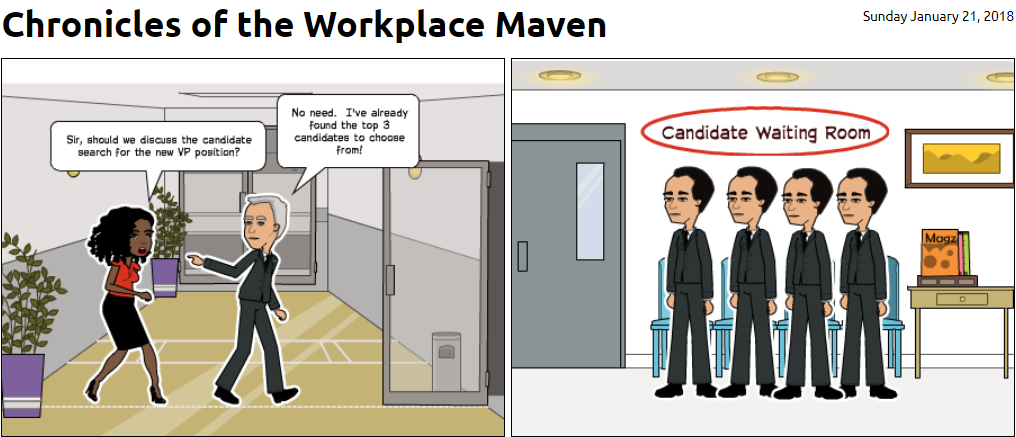“If your actions inspire others to dream more, learn more, do more and become more, you are a leader.” – John Quincy Adams
One of the most important decisions an organization makes is choosing its leadership. Yet, Gallup studies have found that Companies fail to choose the leadership candidate with the right talent for the job 82% of the time. While there is no such thing as an ideal leader, the individuals chosen to lead the various aspects of an organization will impact – positively or negatively – those charged with carrying out the mission and goals of an organization, ultimately determining whether an organization is successful.
A big contributor to inefficiency in selecting the right leaders is that organizations continue to use traditional selection processes and look to factors that alone will not have bearing on whether that particular leader will be successful. For example, whether he or she rose through the ranks; graduated from the “right” schools; worked for top tier organizations; is charming or charismatic. While these characteristics may coincidentally be characteristics of certain leaders that have found success, none has any true bearing on leadership potential.
To get beyond the typical inquiries or assessment, there are three (3) questions that should be asked when selecting a leader:
1. Do you have a holistic view of the candidate? Examining a candidates’ potential for leadership from many perspectives is key to making the right selection. Outside of looking at the requisite education, technical skills or training, there are various “soft” skills and characteristics that should be examined and sought of leadership candidates. For instance, characteristics such as being a relationship builder, effective listener and communicator, or personal integrity, are difficult to judge, however, you can seek various perspectives held by the people who have managed or worked with the individual throughout his or her career to reach your conclusion. One of the strongest leaders I ever worked for encouraged me to speak to people that had worked for and with her prior to my deciding to join her team. Not only did that demonstrate the confidence that she had in her leadership abilities, but that is the same approach that should be taken when determining whether someone truly is a capable leader. Really look to see how he or she is viewed and supported (or not) by those who’ve worked for or with him or her. Many candidates will look great on paper, but the experience and perspectives of other is the true measure. Leverage the benefit of someone else’s hindsight. If employees or colleagues haven’t accepted this person as a leader in the past, and given him or her their support and allegiance, it’s unlikely your employees will do so now or in the future.
2. Have You Been Blinded by the “Halo Effect”? Edward Thorndike coined the phrase “the Halo Effect” which is the occurrence whereby we assume that because someone is good at doing A they will be good at doing B, C and D as well. This Halo Effect often occurs in leadership selection. You see someone that is good at doing their job, such as having strong operational expertise or business acumen, and you assume that this person can succeed at a higher level, in this case, a leadership position. However, being in leadership requires a different – and often more challenging- skillset that the employee may not possess. What you’ve identified are superior technical skills, but technical skills and leadership competencies are two different things. Alternately, just because you possess one, does not mean that you possess the other. I don’t point this out for the purpose of excluding those that have the strong technical skills; but merely to point out that the strong technical skills alone are not a sufficient indicator of a someone fit for leadership. Avoid the trap of overvaluing certain attributes while undervaluing others that truly matter.
3. Have you Failed to Consider a Strong Candidate Hiding in Plain Sight? Similarity and familiarity with someone is what often leads to leadership selection in Corporate America. Many that are in the position to make leadership selections tend to favor candidates with backgrounds, experiences, and characteristics similar to their own. This leads to strong and sometimes more capable candidates being overlooked because of differences in race, gender, or socioeconomic, cultural, academic, or geographic background or simply because they have never held a comparable position at a similar organization. Stephen Covey once said: “Strength lies in differences, not in similarities.” Ensure you have a diverse talent pipeline when considering leadership candidates and don’t merely conform to how it’s always been done. High leadership potential is often waiting to be discovered, but unless we expand the mindset beyond particular profiles or what we’re comfortable with organizations will continue to miss out on great talent that could help them achieve even greater results.

